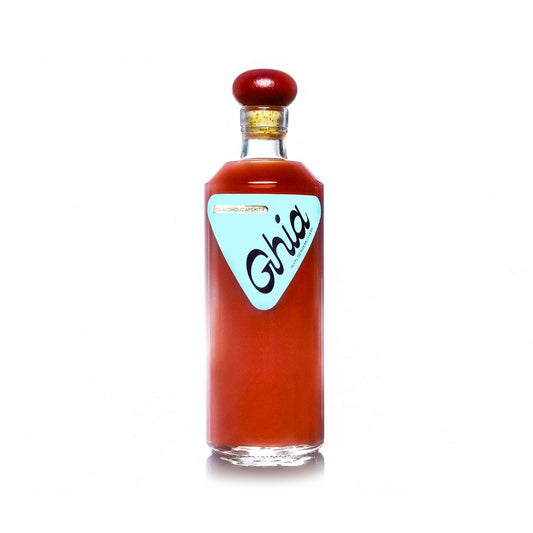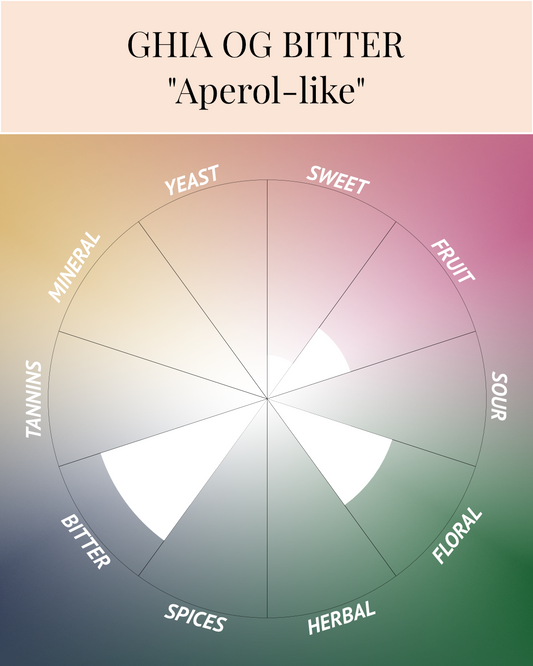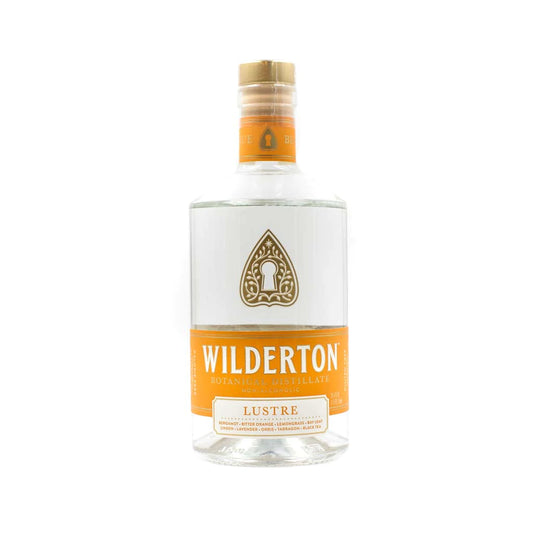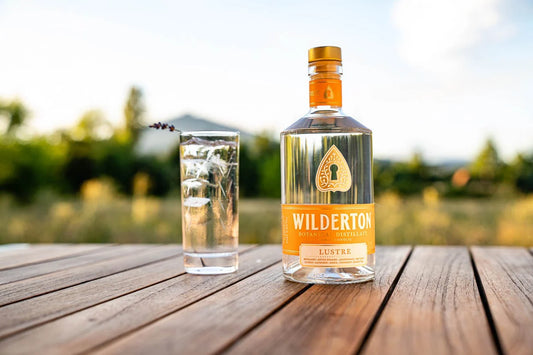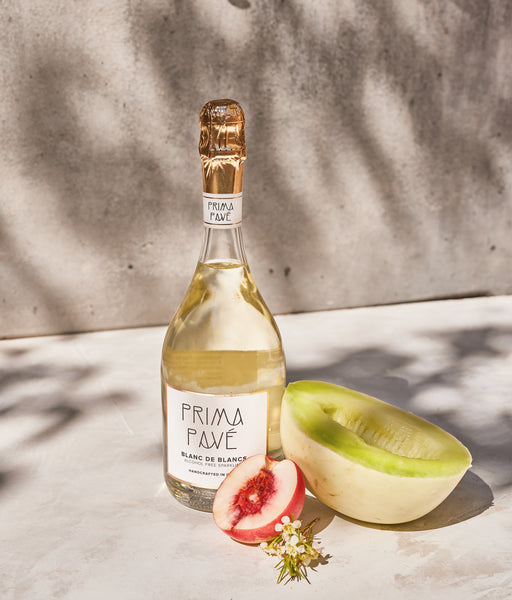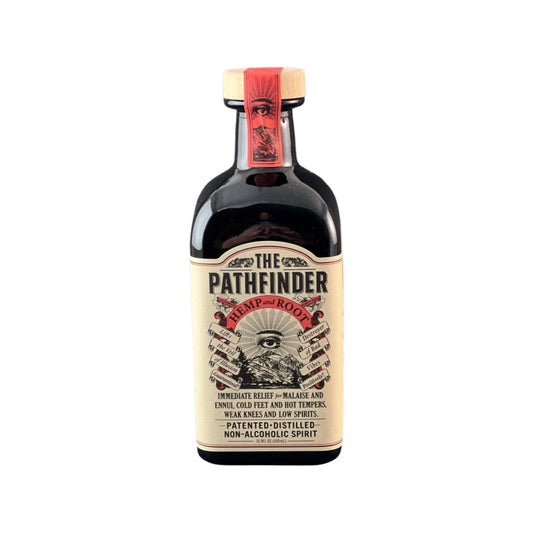What you’ll learn in this review:
- Who makes NON - the wine alternative?
- How is NON made?
- What is verjus?
- What does NON3 Toasted Cinnamon & Yuzu taste like?
- How to NON3 Toasted Cinnamon & Yuzu
- My overall recommendation
Image courtesy of news.nestia.com
Who makes NON the Wine Alternative?
In 2018, Aaron Trotman was working working on cosmetics when he and his wife—who doesn’t drink alcohol—ventured on a trip through Europe trying tasting menus. Somewhere between Paris and London, things were starting to click. When he visited the Clove Club, his wife ordered the non-alcoholic pairing while he ordered the normal alcoholic one—but he kept stealing sips of his wife’s drinks.
When he got back to Melbourne, he continued to seek out and try premium mocktails and it really clicked. Tasting menu after tasting menu later, the question was “Why can’t you buy these drinks without having a $250+ meal?”
Aaron was working at FMCG in personal care and had already created a men’s grooming line. He was working on creating another cosmetics brand and part of it included a tea paring for the cosmetic. Through that process, he told the chef about his idea and the chef said, “I can do that!” Three days later, the chef came back with some prototypes and they were off to the races!
In January 2019, Aaron had no idea what was going on in non-alc scene. He hadn’t heard of Seedlip or any of the players. But that didn’t stop him. He realized he was onto something big. From the prototypes, he created maybe 35 iterations of the formula for NON1 Salted Raspberry and Chamomile until he was happy.
Then in 2019, a friend connected him to restaurant Black Hearts and Sparrows who immediately ordered three cases and the brand started to take off—and then NON was officially born. They are now darlings of the fine dining scene in Melbourne. Featured at fine dining restaurants like Supernormal, Nomad, and The Victoria Hotel, Footscray. They’ve done really New Zealand and Japan and launched in the USA in May 2022.
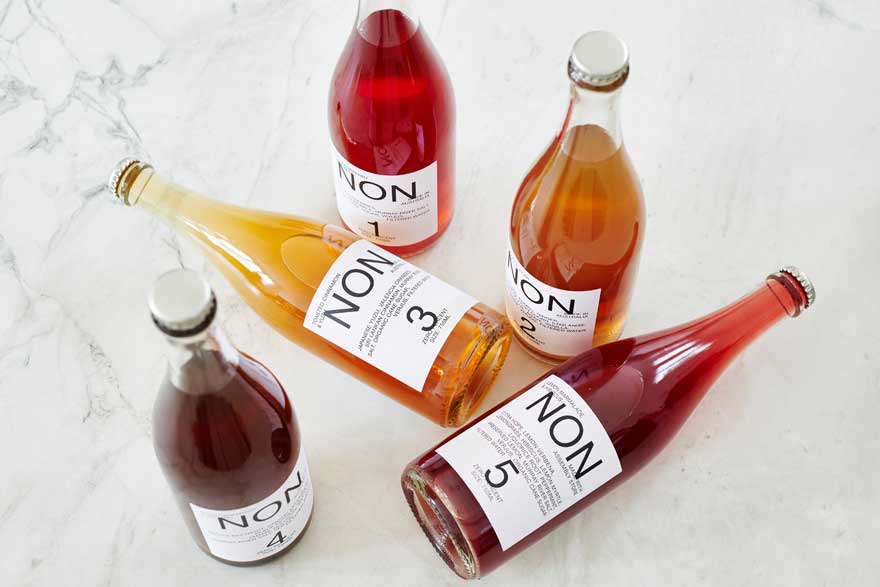
How is NON made?
The key to the quality of NON is the chef’s approach to building layers of flavour, aroma and texture by combining different ingredients and techniques. Using his cosmetics background, Aaron knew how to test and iterate on formulas to create unique flavor and aroma combinations, much like you would with perfumery.
NON is a non-fermented wine alternative. It’s created with dehydrated fruits, spices, salt, and verjus to mimic the flavors and mouthfeel that you would get from wine: floral, salinity, tannin, and acid.
The strategy behind their formulation is interesting. They start with verjus as the base that is consistent across all their products. Then they decide on a fruit flavor, like Raspberry. The fruit is dehydrated to concentrate and caramelize the flavors, adding body and sweetness and floral qualities to the drink to balance the verjus.
From their they decide which spices to add and that becomes the backbone of the drink. From there, they look for unique elements to add, like kombu or olive juice, to add elements—like you would add bitters to a drink for seasoning. They also add tea for added structure and tannins.
The process is very unique. To create their facility, they needed to draw from equipment used in brewing beer, creating wine, and cookery to produce—what is categorized as a food. The result is a premium product that takes a lot of precision and time to make and that tastes oh so good.
Read on to see my tasting notes!
What is verjus?
So you’ve seen the word verjus a couple times now. Verjus is a french word that is really a combination of two words—vert and jus—which translates to green juice. It refers to a highly acidic juice made from underripe fruits. Verjus can be made from different fruits, but the most common is grape verjus.
Underripe grapes are harvested to help condense the sugars in the other grapes on the vine and help turn them into product that is ready for wine making. Typically 20%-30% of grapes are pruned. Not all vineyards that do this actually produce verjus because it’s labor intensive and requires some precision. The verjus needs to be processed and bottled quickly so that it doesn’t start fermenting because the promise of Verjus is that it is always a non-alcoholic product.
Traditionally, it was used for making mustards and other sauces in cooking. But now, more bartenders are using it to replace acids like lemon juice because they can add more mineral qualities and increase the volume of a drink. Instead of using 1/4 oz of lemon juice, they can add double the amount or more of verjus. More non-alc producers are considering verjus as a potential base as well. For example, other producers like Acid League also use verjus as part of their base. You can read my Acid League reviews as well:
- Acid League Wine Proxies - Nightshade
- Acid League Wine Proxies - Sauvage
- Acid League Wine Proxies - Zephyr
What does NON3 Toasted Cinnamon & Yuzu taste like?

Sometimes the fear with non-alcoholic wine is that it tastes too much like juice. The thing is, sometimes you have to reset your expectations. NON isn’t trying to be a de-alocholized wine that recreates your wine experience 1 for 1. In the words of their founder, Aaron Trotman, “De-alcoholized wine is like ripping the guts out of it.”
NON is for the wine occasion, but it’s not wine. The NON3 includes ingredients like Valencia Orange, Sri Lankan Cinnamon, Jaapanese Yuzu, and Murray River Salt. The balance of acid and salt really come together here beautifully.
The backbone of this drink is its salinity and minerality. The floral qualities are soft accents both on the nose and on the palate. The bouquet is sweet and slightly sharp with the perfume from the orange and an apple quality from the verjus. The bouquet is strong. You can smell it wafting towards you when it is just sitting in the wine glass on the table. I love that it has this multi-sensory experience.
On the palate, the yuzu isn’t very pronounced, a bit overshadowed by the prominent valencia orange (also known as bitter orange). And the cinnamon is also very light, simply adding a slight woodiness to the drink.
With low sugar, there aren’t a lot of strong tears on the glass. But the overall flavor profile is somewhat sweet from the caramelized fruit. However, the overall profile skews acidic due to the verjus. There is light grape flavor, but it’s not like you’re drinking Welches because the salinity, minerality, and acidity counterbalance the sweetness perfectly.
Unlike a wine, where the flavors continue to evolve and emerge. You know what you’re getting into with this. It says it on the bottle—and that is a beautiful thing when you’re paying $30 for it.
Note: this one doesn’t have bubbles.
How to drink NON3 Toasted Cinnamon & Yuzu
The easiest way to enjoy NON2 is chilled in a wine glass. Make sure you serve it chilled for the best experience, otherwise the tartness becomes more pronounced.
But you can also mix it into cocktails, substituting it for when you might use an acid or a wine float. Here are two NA cocktails that are sure to satisfy:
Whiskey Sour
- 2 oz Drycraft Whiskey
- 2.5 oz NON3 Toasted Cinnamon & Yuzu
- Cherry Garnish
- Serve in a rocks glass
Plumdog Millionaire Cocktail
- Rim the glass with lavender sugar
- 2 oz Monday Gin
- 2 oz NON3 Toasted Cinnamon & Yuzu
- 1 barspoon Korean Plum syrup
- 1 oz lavender syrup
- 1/2 slice black plum for garnish
- Serve in a Collins glass
My overall recommendation
I absolutely love NON3 Toasted Cinnamon & Yuzu! It’s something I will keep on hand at home for special occasions. It would go perfectly for Christmas dinner.
While the bottles do have an expiration date, you have 3 weeks to consume them once opened. Yes, they do lose their bubbles, but the flavors are still tasty. I don’t think a bottle will last you 3 weeks though. They’re that good.

